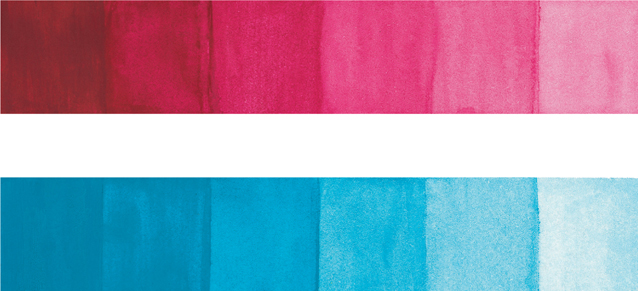Watercolor Techniques
An important aspect of watercolor painting is controlling moisture. The strength of a color, the fluidity of the paint, and the texture of a brushstroke are all determined by the amount of water used. Although washes are the most basic method of applying watercolor, there are also a number of specialized techniques that can create dynamic effects, as shown in the examples here. Every technique produces a unique result, so be sure to familiarize yourself with each!
FLAT WASH
A flat wash is a simple way to cover a large area with solid color. It can play the role of a flat backdrop to more dramatic visual elements or serve as an initial layer of color, or underpainting. Washes can be laid in on wet or dry paper, and a combination of the two also can produce expressive results. For a flat wash, load your brush with color before each strokes to maintain the same depth of color overall.
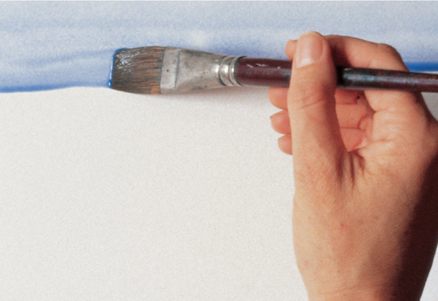
1 Begin by tilting your support. Load your brush with color, and apply a horizontal stroke all the way across the top of the paper.

2 Load your brush again and make another overlapping horizontal stroke, picking up the drips and runs from the stroke above.
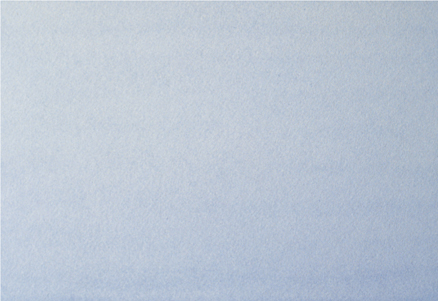
3 Continue loading your brush and overlapping your strokes, always working in the same direction. (Any streaks will even out as the paint dries.)
GRADATED WASH
Gradated washes are the perfect method for painting realistic water and skies. Gradated washes are laid in the same way as flat washes are, but more water is added to the pigment for each successive stroke, so the color gradually fades as you work your way down. (You also can create a variegated wash by adding different colors with each stroke.)
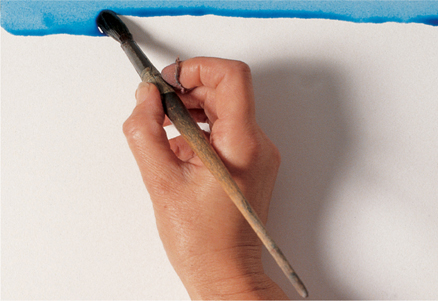
1 Tilt your board at an angle, and begin with a horizontal band of pure (undiluted) color.

2 Before applying each new band of color, add more water to your brush so each is lighter in value.

3 Continue adding water and overlapping strokes until you achieve the lightest value desired.
USING SALT To create a dappled texture, apply some table salt to an area of damp paint. The salt absorbs the paint, creating fascinating patterns. Sprinkle a little salt on an area while the paint is still wet; when dry, brush off the salt.

USING ALCOHOL For a visually interesting effect, drop some rubbing alcohol onto a wet wash. Alcohol repels water, pushing away the paint and forming irregular patterns and shapes. This technique is great for creating backgrounds.

BACK RUNS This effect occurs when two different colors of paint run into each other, creating irregular blends that are ideal for water or backgrounds. Apply two wet colors onto a damp surface and allow them to merge and bleed for soft shapes.
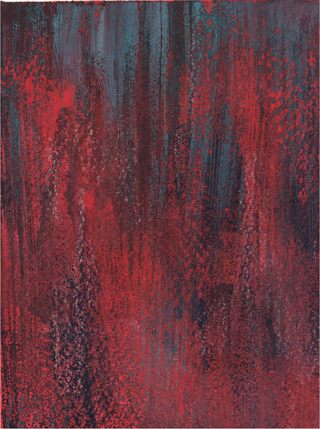
WAX RESISTS Like alcohol, wax repels water—if you draw on paper with a white wax crayon and lay a watercolor wash over it, the paint will slide right off the wax. Use wax resists to create patterns or small details.
PRESERVING WHITES
Because watercolorists generally use the white of the paper for the lightest areas of their paintings (rather than using white paint), it’s important to “save” these areas from color. Watercolor is such a fluid medium that the colors easily bleed into areas that you might want to preserve. Below you’ll find two simple ways to retain whites: painting around the white areas and using masking fluid.

PAINTING AROUND WHITE AREAS One way to save the light areas of your paper is to simply paint around those areas of your subject. It helps to wet the paper where you want to paint, keeping dry the area you’re painting around. The dry area stops the bleed and flow of the wet paint, protecting the light areas from receiving paint. At an earlier stage of the painting, this artist decided that the white picket fence and the right side of the lighthouse should receive the lightest values, so she simply painted around those areas. The example above right shows the final result.

APPLYING MASKING FLUID Many watercolorists use masking fluid (also called “liquid frisket”) to preserve the white of the paper. (See page 14). To apply masking fluid, first dampen an old brush and stroke it over a bar of soap to keep the bristles from absorbing too much fluid. Then dip the brush into frisket and apply it to the areas of your painting that you want to keep white (1). Let the frisket dry and then apply paint over it (2). After the paint dries, rub off the frisket with your finger, revealing the white of the paper. You can leave the area pure white or glaze over it (see below) to tone it down.

